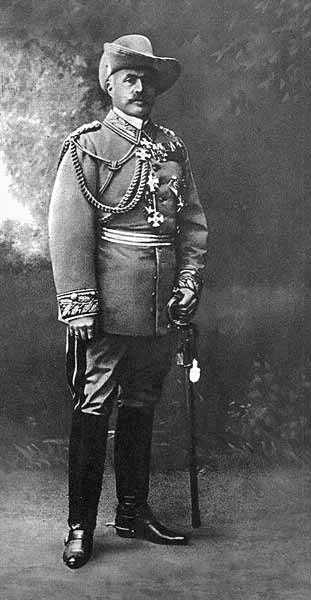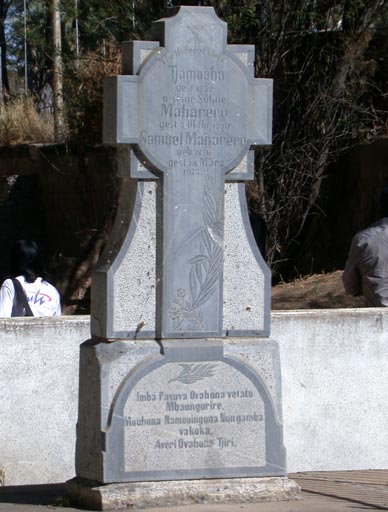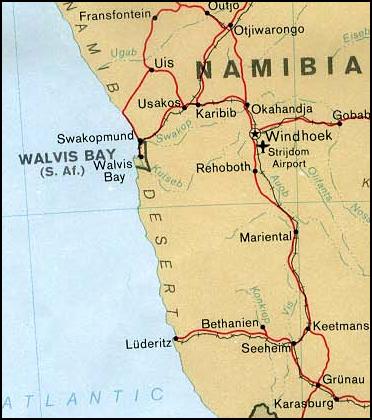|
Gross Barmen
Gross Barmen (German: Groß Barmen) is a historic settlement and a recreational spa on the Swakop River in central Namibia, north of Windhoek. It is situated on the District Road 1972, 25 km south-west of Okahandja in the Otjozondjupa Region. Its close proximity to the capital Windhoek makes it a popular weekend destination for locals. History Originally known as ''Otjikango'' (Otjiherero: "large fountain"), the site was inhabited by the Herero people. When Wesleyan missionaries arrived in Windhoek in 1844 at the invitation of Jonker Afrikaner, Rhenish missionaries Carl Hugo Hahn and Franz Heinrich Kleinschmidt, already resident there since 1842, feared conflict and moved on to Otjikango. Here they established the first Rhenish mission station to the Herero in late 1844. They named the place ''Barmen'' after the town Barmen (today part of Wuppertal) in Germany where the headquarters of the Rhenish Missionary Society were located. The ruins of the missionary house are still v ... [...More Info...] [...Related Items...] OR: [Wikipedia] [Google] [Baidu] |
Herero Language
Herero (, ''Otjiherero'') is a Bantu language spoken by the Herero and Mbanderu peoples in Namibia and Botswana, as well as by small communities of people in southwestern Angola. There were 211,700 speakers in 2014. Distribution Its linguistic distribution covers a zone called Hereroland, which is constituted of the region of Omaheke along with the Otjozondjupa and Kunene Regions. The Himba people, who are related to the Herero and Mbanderu, speak a dialect very close to Otjiherero. Many Herero-speakers live in Windhoek, the capital of Namibia. Phonology Consonants The sounds /f s l/ are found in loanwords. Vowels Script Because of the translation of missionary Gottlieb Viehe (1839–1901) of the Bible into Herero, at the end of the 19th century, the spoken language was transcribed to an alphabet based on the Latin script. Father Peter Heinrich Brincker (1836–1904) translated several theological works and songs. Orthography * a - �* b - * d - * ḓ - ̪* e ... [...More Info...] [...Related Items...] OR: [Wikipedia] [Google] [Baidu] |
Wuppertal
Wuppertal (; "''Wupper Dale''") is, with a population of approximately 355,000, the seventh-largest city in North Rhine-Westphalia as well as the 17th-largest city of Germany. It was founded in 1929 by the merger of the cities and towns of Elberfeld, Barmen, Ronsdorf, Cronenberg and Vohwinkel, and was initially "Barmen-Elberfeld" before adopting its present name in 1930. It is regarded as the capital and largest city of the Bergisches Land (historically this was Düsseldorf). The city straddles the densely populated banks of the River Wupper, a tributary of the Rhine called ''Wipper'' in its upper course. Wuppertal is located between the Ruhr (Essen) to the north, Düsseldorf to the west, and Cologne to the southwest, and over time has grown together with Solingen, Remscheid and Hagen. The stretching of the city in a long band along the narrow Wupper Valley leads to a spatial impression of Wuppertal being larger than it actually is. The city is known for its steep ... [...More Info...] [...Related Items...] OR: [Wikipedia] [Google] [Baidu] |
Herero And Namaqua Genocide
The Herero and Namaqua genocide or the Herero and Nama genocide was a campaign of ethnic extermination and collective punishment waged by the German Empire against the Herero (Ovaherero) and the Nama in German South West Africa (now Namibia). It was the first genocide of the 20th century, occurring between 1904 and 1908. In January 1904, the Herero people, who were led by Samuel Maharero, and the Nama people, who were led by Captain Hendrik Witbooi, rebelled against German colonial rule. On January 12, they killed more than 100 German settlers in the area of Okahandja, although women, children, missionaries and non-German Europeans were spared. In August, German General Lothar von Trotha defeated the Ovaherero in the Battle of Waterberg and drove them into the desert of Omaheke, where most of them died of dehydration. In October, the Nama people also rebelled against the Germans, only to suffer a similar fate. Between 24,000 and 100,000 Hereros and 10,000 Nama died in the g ... [...More Info...] [...Related Items...] OR: [Wikipedia] [Google] [Baidu] |
German South West Africa
German South West Africa (german: Deutsch-Südwestafrika) was a colony of the German Empire from 1884 until 1915, though Germany did not officially recognise its loss of this territory until the 1919 Treaty of Versailles. With a total area of 835,100 km², it was one and a half times the size of the mainland German Empire in Europe at the time. The colony had a population of around 2,600 Germans. German rule over this territory was punctuated by numerous rebellions by its native African peoples, which culminated in a campaign of German reprisals from 1904 to 1908 known as the Herero and Namaqua genocide. In 1915, during World War I, German South West Africa was invaded by the Western Allies in the form of South African and British forces. After the war its administration was taken over by the Union of South Africa (part of the British Empire) and the territory was administered as South West Africa under a League of Nations mandate. It became independent as Namibia on 21 ... [...More Info...] [...Related Items...] OR: [Wikipedia] [Google] [Baidu] |
Maharero
Maharero kaTjamuaha (Otjiherero: ''Maharero, son of Tjamuaha'', short: Maharero; 1820 – 7 October 1890) was one of the most powerful paramount chiefs of the Herero people in South-West Africa, today's Namibia. Early life Maharero, was born about 1820 at Okahandja. In 1843 he went with his father Tjamuaha to Windhoek to stay with Jonker Afrikaner, Captain of the Oorlam Afrikaners. Tjamuaha was an ally of Jonker Afrikaner until his death in 1861, albeit in a subordinate position. Maharero a leader of Ovaherero community in (1861-1890) was born in ca 1820 at Otjikune near Okahandja and he was the son of Tjamuaha and his chief wife Tjorozumo. He had several brothers and half-brothers, amongst them were Kavezeri, Kariteova, Kavikunua and Rijarua. Like his father, Maharero became an ally of Jonker Afrikaner in 1843. As from 1863 onwards, he refused to accept the dominance of the Afrikaners and was recognized by both Herero’s and the European in the country as the representat ... [...More Info...] [...Related Items...] OR: [Wikipedia] [Google] [Baidu] |
Peter Heinrich Brincker
Peter may refer to: People * List of people named Peter, a list of people and fictional characters with the given name * Peter (given name) ** Saint Peter (died 60s), apostle of Jesus, leader of the early Christian Church * Peter (surname), a surname (including a list of people with the name) Culture * Peter (actor) (born 1952), stage name Shinnosuke Ikehata, Japanese dancer and actor * ''Peter'' (album), a 1993 EP by Canadian band Eric's Trip * ''Peter'' (1934 film), a 1934 film directed by Henry Koster * ''Peter'' (2021 film), Marathi language film * "Peter" (''Fringe'' episode), an episode of the television series ''Fringe'' * ''Peter'' (novel), a 1908 book by Francis Hopkinson Smith * "Peter" (short story), an 1892 short story by Willa Cather Animals * Peter, the Lord's cat, cat at Lord's Cricket Ground in London * Peter (chief mouser), Chief Mouser between 1929 and 1946 * Peter II (cat), Chief Mouser between 1946 and 1947 * Peter III (cat), Chief Mouser between 19 ... [...More Info...] [...Related Items...] OR: [Wikipedia] [Google] [Baidu] |
Barmen
Barmen is a former industrial metropolis of the region of Bergisches Land, Germany, which merged with four other towns in 1929 to form the city of Wuppertal. Barmen, together with the neighbouring town of Elberfeld founded the first electric suspended monorail tramway system, the Schwebebahn ''floating tram''. History Barmen was a pioneering centre for both the early industrial revolution on the European mainland, and for the socialist movement and its theory. It was the location of one of the first concentration camps in Nazi Germany, KZ Wuppertal-Barmen, later better known as Kemna concentration camp. Oberbarmen (Upper Barmen) is the eastern part of Barmen, and Unterbarmen (Lower Barmen) the western part. One of its claims to fame is the fact that Friedrich Engels, co-author of ''The Communist Manifesto'', was born in Barmen. Another of its claims is the fact that Bayer AG was founded there by Friedrich Bayer and master dyer Johann Friedrich Weskott with the express pur ... [...More Info...] [...Related Items...] OR: [Wikipedia] [Google] [Baidu] |
Kaapstad
Cape Town ( af, Kaapstad; , xh, iKapa) is one of South Africa's three capital cities, serving as the seat of the Parliament of South Africa. It is the legislative capital of the country, the oldest city in the country, and the second largest (after Johannesburg). Colloquially named the ''Mother City'', it is the largest city of the Western Cape province, and is managed by the City of Cape Town metropolitan municipality. The other two capitals are Pretoria, the executive capital, located in Gauteng, where the Presidency is based, and Bloemfontein, the judicial capital in the Free State, where the Supreme Court of Appeal is located. Cape Town is ranked as a Beta world city by the Globalization and World Cities Research Network. The city is known for its harbour, for its natural setting in the Cape Floristic Region, and for landmarks such as Table Mountain and Cape Point. Cape Town is home to 66% of the Western Cape's population. In 2014, Cape Town was named the best place ... [...More Info...] [...Related Items...] OR: [Wikipedia] [Google] [Baidu] |
Nama People
Nama (in older sources also called Namaqua) are an African ethnic group of South Africa, Namibia and Botswana. They traditionally speak the Nama language of the Khoe-Kwadi language family, although many Nama also speak Afrikaans. The Nama People (or Nama-Khoe people) are the largest group of the Khoikhoi people, most of whom have disappeared as a group, except for the Namas. Many of the Nama clans live in Central Namibia and the other smaller groups live in Namaqualand, which today straddles the Namibian border with South Africa. History For thousands of years, the Khoisan peoples of South Africa and southern Namibia maintained a nomadic life, the Khoikhoi as pastoralists and the San people as hunter-gatherers. The Nama are a Khoikhoi group. The Nama originally lived around the Orange River in southern Namibia and northern South Africa. The early colonialists referred to them as Hottentots. Their alternative historical name, "Namaqua", stems from the addition of the Khoekhoe ... [...More Info...] [...Related Items...] OR: [Wikipedia] [Google] [Baidu] |
Swakopmund
Swakopmund (german: Mouth of the Swakop) is a city on the coast of western Namibia, west of the Namibian capital Windhoek via the B2 main road. It is the capital of the Erongo administrative district. The town has 44,725 inhabitants and covers of land. The city is situated in the Namib Desert and is the fourth largest population centre in Namibia. Swakopmund is a beach resort and an example of German colonial architecture. It was founded in 1892 as the main harbour for German South West Africa. Buildings in the city include the '' Altes Gefängnis'', a prison designed by Heinrich Bause in 1909. The ''Woermannhaus'', built in 1906 with a prominent tower (Damara tower), is now a public library. Attractions in Swakopmund include a Swakopmund Museum, the National Marine Aquarium, a crystal gallery, and spectacular sand dunes near Langstrand south of the Swakop River. Outside the city, the Rossmund Desert Golf Course is one of only five all-grass desert golf courses in the world. ... [...More Info...] [...Related Items...] OR: [Wikipedia] [Google] [Baidu] |
Walvis Bay
Walvis Bay ( en, lit. Whale Bay; af, Walvisbaai; ger, Walfischbucht or Walfischbai) is a city in Namibia and the name of the bay on which it lies. It is the second largest city in Namibia and the largest coastal city in the country. The city covers a total area of of land. The bay is a safe haven for sea vessels because of its natural deepwater harbour, protected by the Pelican Point sand spit, being the only natural harbour of any size along the country's coast. Being rich in plankton and marine life, these waters also drew large numbers of southern right whales, attracting whalers and fishing vessels. A succession of colonists developed the location and resources of this strategic harbour settlement. The harbour's value in relation to the sea route around the Cape of Good Hope had caught the attention of world powers since it was discovered by the outside world in 1485. This explains the complicated political status of Walvis Bay down the years. The town is situated ... [...More Info...] [...Related Items...] OR: [Wikipedia] [Google] [Baidu] |
Otjimbingwe
Otjimbingwe (also: Otjimbingue) is a settlement in the Erongo Region of central Namibia. It has approximately 8,000 inhabitants. History The area was already a temporary settlement of some Herero in the early 18th century. Their chief Tjiponda coined the name ''Otjizingue'' ( hz, refreshing place, referring to the natural spring) from which the settlement's name developed. The Rhenish Mission Society used Otjimbingwe as a central location for their Namibian mission in 1849. Johannes Rath and his family settled in the area on 11 July that year. In 1854, copper was found in the nearby Khomas highlands and the Walwich Bay Mining Company established its offices in the city. Miners and merchants flocked to the settlement, and the researcher and businessman Karl Johan Andersson bought the entire settlement in 1860. He sold it five years later to the Rhenish Missionary Society. However the supply had been exhausted by that time, and the mining operations ceded. The settlement was att ... [...More Info...] [...Related Items...] OR: [Wikipedia] [Google] [Baidu] |




.jpg)



